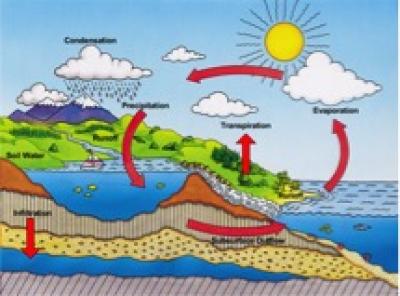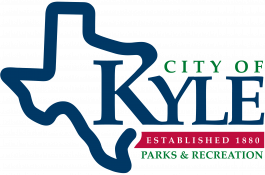Stormwater FAQs
What is stormwater runoff?
Stormwater runoff is unfiltered rainwater that reaches streams, creeks, rivers, lakes, and oceans by flowing across impervious surfaces, such as roads, parking lots, driveways and roofs.
What is polluted stormwater runoff?
Rainwater either seeps into the ground or “runs off” to lower areas, making its way into streams, lakes and other water bodies. On its way, runoff water can pick up and carry many substances that pollute water.
Some pollutants - like pesticides, fertilizers, oil and soap – are harmful in any quantity. Other pollutants – like sediment from construction, bare soil, agricultural land, pet waste, grass clippings and leaves – can harm creeks, rivers and lakes in sufficient quantities.
In addition to rainwater, various human activities like lawn watering, car washing, and malfunctioning septic tanks can also put pollutants onto the land. When it rains, those pollutants get carried away to creeks, rivers and lakes.
Polluted runoff generally happens anywhere people use or alter the land. For example, in developed areas, none of the water that falls on hard surfaces like roofs, driveways, parking lots or roads can seep into the ground. These impervious surfaces create large amounts of runoff that picks up pollutants. The runoff flows from gutters and storm drains to streams. Runoff not only pollutes our waterways but also erodes streambanks. The mix of pollution and eroded dirt muddies the water and causes problems downstream.
What causes polluted stormwater runoff?
Polluted stormwater generally happens anywhere people use or alter the land. People going about their daily lives are the number one source of stormwater pollutants. Most people are unaware of how they impact water quality. Some common examples include over fertilizing lawns, excessive pesticide use, not picking up pet waste, letting oil drip out of their vehicles and littering. Developed areas in general, with their increased runoff, concentrated numbers of people and animals, construction and other activities, are a major contributor to pollution in our waterways.
What is stormwater management?
Stormwater management seeks to reduce pollution as well as the impacts that stormwater runoff has on our waterways - whether it's from a flood or from hosing off your driveway, rainwater picks up pollutants and eventually those pollutants drain into rivers, streams and oceans. It comes as no surprise that stormwater runoff is the number one cause of stream impairment in urban areas.
How are stormwater and runoff “managed”?
Best Management Practices (BMPs) is a term used to describe different ways to keep pollutants out of runoff and to slow down high volumes of runoff.
Preventing pollution from entering water is much more affordable than cleaning polluted water! Educating residents about how to prevent pollution from entering waterways is one best management practice. City ordinances that require people and businesses involved in earth disturbing activities - like construction and agriculture – also help to prevent erosion and stormwater pollution.
Education and city ordinances are just two BMP examples. Other BMPs are constructed to protect a certain area, some are designed to slow down stormwater, while others help reduce the pollutants that are already being carried away in stormwater.
Detention ponds, built to temporarily hold water so it seeps into the ground slowly, fill up quickly after a rainstorm and allow the solids like sediment and litter to settle at the pond bottom. Then, they release the water slowly. These ponds are one constructed BMP example. Green roofs, storm drain grates, filter strips, sediment fences and permeable paving are other examples of BMPs.
Why all the recent fuss about stormwater?
The federal Clean Water Act requires large and medium sized towns across the United States to take steps to reduce polluted stormwater runoff. The law was applied in two phases. The first phase addressed large cities. The second phase, often referred to as ”Phase II,” requires medium and small cities, fast growing cities and those located near sensitive waters to take steps to minimize the discharge of pollutants in stormwater.
These laws require certain cities to do the following:
1) Conduct public education, outreach and involvement about polluted stormwater runoff;
2) Detect illicit discharges (e.g. straight piping or dumping);
3) Control construction site runoff;
4) Control post-construction runoff; and
5) Perform municipal housekeeping (e.g. take steps to prevent runoff from city buildings and activities).
If it only affects streams and creeks, why should I care?
Streams and creeks feed into rivers, lakes and the ocean. We all drink water, so we are all affected when our water is polluted. As water treatment costs rise, the price of drinking water goes up. If you like to fish, swim or boat, you may have heard or been affected by advisories warning you not to swim, fish or boat in a certain area because of unhealthy water or too much algae. Money made from tourism and water recreation can also be impacted, as are businesses and homes flooded by stormwater runoff. When we pollute our water, everyone is affected!
How water recycles itself:
The water cycle is the process by which water is continually recycled.
Dr. David Maidenment in his Handbook of Hydrology states:
“The hydrologic cycle is the most fundamental principle of hydrology. Water evaporates from the oceans and the land surface, is carried over earth in atmospheric circulation as water vapor, precipitates again as rain or snow, is intercepted by trees and vegetation, provides runoff on the land surface, infiltrates into soils, recharges groundwater, discharges into streams, and ultimately, flows out into the oceans from which it will eventually evaporate once again. This immense water engine, fueled by solar energy, driven by gravity, proceeds endlessly in the presence or absence of human activity.”
No Pile Left Behind – Get the Scoop on Poop





